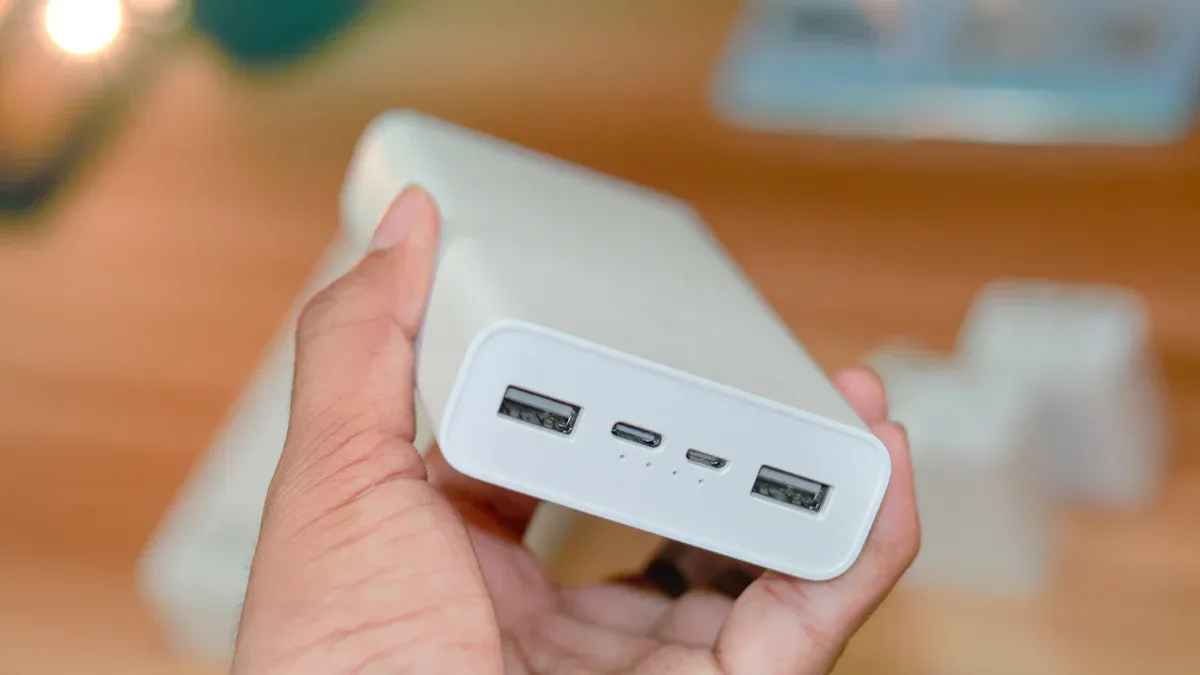
Ever thought about how car cigarette lighters work? They use the car’s electricity to heat up. Inside, there’s a part that turns electricity into heat. All'inizio, they were made to light cigarettes. Now, people use them for many other things. Interesting, isn’t it? 🔥
How Car Cigarette Lighters Work
Connection to the Vehicle’s Electrical System
Car cigarette lighters work by connecting directly to the vehicle’s electrical system. This system gives the power needed to make heat. When you plug the lighter into its socket, it uses the car’s 12-volt battery. This battery also powers your headlights, radio, and other devices.
The cigarette lighter socket links the lighter to the car’s electrical system. It is built to safely handle strong currents. If your lighter stops working, it might be because of a blown fuse. Check the fuse first if you think the lighter is broken. This is a fast way to find the problem.
The Heating Element and Heat Generation
The heating element is the key part for making heat. Inside the lighter, there’s a coiled wire made of nichrome or similar material. This wire gets hot when electricity passes through it. The process is simple: electricity turns into heat, making the coil glow red-hot.
It’s amazing how fast this happens. In seconds, the heating element gets hot enough to light a cigarette or melt some materials. This simple design makes car cigarette lighters work so well. But if the heating element breaks, the lighter won’t work. You may need to replace it or use the car’s auxiliary power outlet instead.
The Push-and-Release Activation Mechanism
The push-and-release mechanism makes using a car cigarette lighter simple. You push the lighter into the socket, and it locks in place. This action lets electricity flow to the heating element. After a few seconds, the lighter pops out by itself. This means it’s ready to use.
This feature is not just easy—it’s also safe. By popping out automatically, the lighter avoids overheating, which could harm the socket or cause a fire. If your lighter doesn’t pop out, it might be stuck or broken. Stop using it and check for problems if this happens.
Components of Car Cigarette Lighters

The Lighter Socket and Power Source
The lighter socket is where all the magic begins. It’s the part you see in your car’s dashboard or center console. When you plug in the car cigarette lighter, the socket connects it to the car’s power supply. This power supply operates at 12 volts, which is enough to heat the lighter or power small devices.
Here’s something interesting: the car’s battery, while called a 12V battery, can actually range from 11 to 13 volts when fully charged. This voltage can drop when you start the engine, which might affect how well the lighter works. Modern cars often have two types of power outlets—switched and unswitched. Switched outlets only work when the car is on, while unswitched ones provide power even when the car is off. Pretty handy, right?
Mancia: If your cigarette lighter socket isn’t working, it could be due to a blown fuse or a loose connection. Always check these first when troubleshooting.
The Heating Coil and Its Function
The heating coil is the heart of the car cigarette lighter. It’s a small, coiled wire made from a material like nichrome. When electricity flows through it, the coil heats up quickly—so fast that it glows red-hot in just a few seconds. This heat is what makes the lighter work.
The coil’s job is simple but crucial. It converts electrical energy into heat energy. Without it, the lighter wouldn’t function. If you’ve ever had a malfunctioning cigarette lighter, chances are the heating coil was damaged. In that case, replacing the lighter is usually the best option.
Fun Fact: The same principle used in the heating coil is also found in devices like toasters and hair dryers. Who knew your car had something in common with your kitchen appliances?
The Fuse and Safety Features
The fuse is the unsung hero of the cigarette lighter system. It’s a small but essential component that protects your car’s electrical system. If there’s a power surge or short circuit, the fuse blows to prevent damage to the socket or other parts of the car.
Most cars have a dedicated fuse for the cigarette lighter receptacle. You can usually find it in the fuse box, which is often located under the dashboard or in the engine bay. If your lighter stops working, checking the fuse should be one of your first troubleshooting steps.
Nota: Always replace a blown fuse with one of the same rating. Using the wrong fuse can cause more problems than it solves.
The safety features don’t stop there. The lighter socket is designed to handle high currents without overheating. Plus, the push-and-release mechanism ensures the lighter doesn’t stay active for too long, reducing the risk of fire. These features make the car cigarette lighter both functional and safe to use.
Alternative Uses for Car Cigarette Lighters

Powering Small Devices with Adapters
Did you know your car cigarette lighter can power small gadgets? It’s true! With an adapter, you can use things like mini vacuums, small fans, or portable air pumps. The adapter plugs into the lighter socket and changes the car’s 12-volt power into what your devices need.
I once used mine to inflate a flat tire. It was super helpful when I was stuck on the road. Just be careful not to overload the outlet. If the device uses too much power, it might blow a fuse. Then, you’d have to figure out how to fix it.
Charging Electronics with USB Converters
Charging your phone or tablet in the car is simple with USB converters. These small tools plug into the power outlet and let you charge devices while driving. Some even work with USB-C for faster charging speeds.
But not all USB converters are good. Cheap ones can slow charging or mess with your car’s radio. High-quality converters, like those with special USB charger chips, avoid these problems. They give strong power and protect against issues like voltage drops. For better results, use thicker cables or powered USB hubs. These small changes can really help.
Emergency Heat Generation
Your car cigarette lighter can make heat in emergencies. It’s not a heater, but the glowing coil can light a fire or melt small things. If you’re stuck in the cold, it might help you start a campfire.
Always be safe when using it. Don’t let the lighter overheat or get stuck in the socket. If it doesn’t pop out, stop using it right away to avoid damage.
Car cigarette lighters are pretty amazing when you think about it. They’re simple, yet incredibly versatile. They rely on your car’s electrical system to generate heat through a small coil. But they’re not just for lighting cigarettes anymore!
Here’s why I think they’re so useful:
Multi-purpose tool: From charging devices to powering gadgets, they’re a lifesaver.
Easy to use: Push, heat, and pop—it’s that simple.
Mancia: Knowing how they work can help you get the most out of them. Next time you’re in your car, take a closer look at this tiny but mighty device! 🚗✨
FAQ
How do I know if my car cigarette lighter is working?
Check for power! Plug in a device like a phone charger. If it doesn’t work, the lighter might have a blown fuse or loose connection. 🔌
Can I leave a device plugged into the lighter socket overnight?
Not recommended. It could drain your car battery, especially with unswitched sockets that stay active when the car is off. Better safe than sorry! 🚗🔋
What’s the difference between a cigarette lighter and a power outlet?
Same socket, different use! A cigarette lighter heats up for lighting, while a power outlet is for charging or powering devices. Both rely on the car’s 12V system. ⚡





